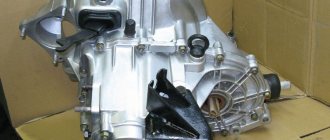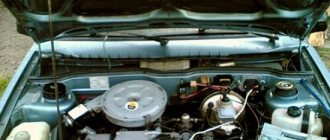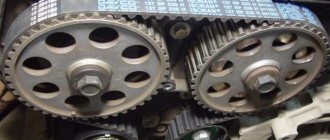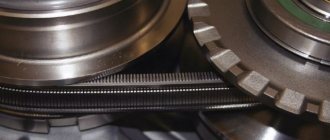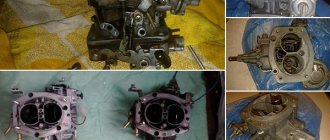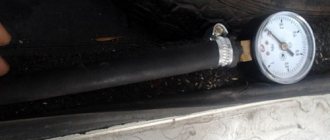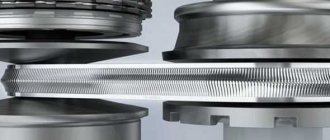The automatic transmission has long ceased to be a component of the transmission of only expensive prestigious cars. Now this is a common unit, available in many simpler car trim levels. Even an inexpensive car will delight the owner by not having to press the clutch when starting and changing gears. Along with comfort, automatic transmission brought to the mass of motorists its own specific forms of failures and their symptoms. When the automatic transmission jerks, that is, when accelerating, shifting or starting, when driving at low or high speeds, jerks are clearly felt, this is a reason to visit a service center for diagnostics.
Why does the machine twitch?
There are no units that never break down. The only question is how often breakdowns occur. Basically, the machine fails for the following reasons:
- souring of the cable or incorrect adjustment of the control drive;
- malfunction of the control system valve body;
- breakdowns or wear in the mechanical part of the automatic transmission;
- friction wear;
- torque converter malfunction;
- electrical malfunctions of the control system;
- failure of the transmission ECU;
- violation of regulations.
One of the main signs of a malfunction is a violation of smooth shifting, i.e. the machine jerks when it changes to any gear. Jerks can occur both when starting from a stop, and when accelerating or braking, or when engaging a higher or lower gear. The twitching becomes especially noticeable when driving at low engine speeds. The box starts to twitch if:
A torn engine cushion can also cause kicks and vibrations
the car has play in the chassis;
- the power unit cushions are worn out;
- insufficient fluid level;
- excess fluid level;
- there is contamination of the liquid;
- the box is not warmed up enough.
If it is discovered that the ATF level does not meet the recommended level, then the box requires close attention. Both a lack and an excess of working fluid lead to foaming, due to which the automatic transmission pump is not able to pump a sufficient amount of oil to the rubbing parts. Under conditions of oil starvation, wear progresses. As a result, when you engage any gear, jerks occur, sometimes accompanied by a noticeable impact. If the car is operated most of the time in the city, in traffic jams, when movement occurs mainly at low engine crankshaft speeds, the gearbox will break down much faster.
If contamination is detected, then it can be assumed that the automatic transmission parts have already begun to wear out intensively. A change in oil color and the presence of impurities, especially large metal particles, is a signal to immediately visit a service center for diagnostics.
Oil filter
Even in the most modern and technologically advanced automatic transmission, where the drive gears are adjusted to each other with very high precision, metal shavings still form in the transmission fluid over time. This is due to the banal wear of metal parts. And the more wear, the more chips. Well, wear and tear is determined by the mileage and operating conditions of the car.
Accordingly, the oil filter in the automatic transmission system becomes clogged over time and cannot pass the required amount of oil through itself. This leads to a decrease in operating pressure in the system , which causes friction discs to suffer. They do not stop at the right moment, and are not clamped with the necessary force. Accordingly, the discs begin to slip , which is the reason for the appearance of shocks when changing gears, both when accelerating and when braking the car. In the worst case, when there is very little oil and the load on the discs is high, they can also burn out.
This situation is especially relevant when the automatic transmission jerks “on hot” . That is, when the engine and transmission system themselves are very hot, and then low pressure and an insufficient amount of ATP fluid occur.
The conclusion suggests itself - it is necessary to monitor the condition of the transmission oil filter, use high-quality ATF fluid with the parameters specified by the automaker. And of course, change the filter and the oil itself on time.
Automatic transmission diagnostic methods
Since the operating principle of automatic transmissions with a torque converter is almost identical, the fault detection algorithm is the same for units of all brands and manufacturers:
During diagnostics, it is necessary to determine at what point complaints about the operation of the automatic transmission arise - when starting, braking, sharp acceleration or a smooth increase in speed, when engaging an upshift or downshift, at low or high engine crankshaft speeds. Using this algorithm allows you to gradually eliminate the causes of an automatic transmission malfunction until the one you are looking for is determined.
Solenoids
Solenoids regulate the supply of transmission fluid to the valve body channels mentioned above. They are special valves that open and close at the right time. They work with the help of rods included in their design. The return stroke of the rod is ensured by a mechanical spring.
Over time, the solenoid (or solenoids) can fail due to mechanical failure or simply old age. Accordingly, they either do not close or do not open the channel. The latter happens more often, that is, the solenoid leaves the desired channel in the closed position constantly. Often the solenoids do not work smoothly, but jerkily, and they get jammed. Accordingly, this affects the operation of the entire automatic transmission; it jerks when switching, and in all modes.
The situation is aggravated by the fact that solenoids in modern cars are often made of plastic. Accordingly, at high temperatures they can melt, lose their geometry and stop working correctly. There are no such problems with metal solenoids. To repair solenoids, it is necessary to dismantle the valve body, clean and adjust it, including the solenoids.
What to do if the reason is ATF
As you can see, the main reason that the automatic transmission jerks when switching is the unsatisfactory condition of the fluid or low temperature. And it doesn’t matter when the automatic transmission starts to twitch: when starting, accelerating, or changing from high to low gear. From here we conclude that if you suspect incorrect operation of the automatic transmission, the first thing you should do is:
- check the fluid level, if it is low, then add it, if it is high, then pump out the excess;
- make sure that the fluid is clean; if there are traces of contamination, replace it as soon as possible;
- when replacing the fluid, be sure to replace the filter, clean the filter mesh, and remove metal particles from the magnetic plugs;
- When driving in low temperatures, remember that the transmission requires warming up for normal operation.
Oil cooler
The purpose of the radiator in an automatic transmission system is to cool the ATF fluid. When its performance characteristics decrease, the oil becomes very hot and burns. This not only spoils the fluid itself, but also affects the operation of the automatic transmission as a whole for the reasons described earlier.
The main reason why the radiator gradually fails is the replacement of transmission fluid under pressure . When performing this procedure on so-called high-pressure apparatuses, the system is installed in the gap between the cooling radiator and the automatic transmission itself. Next, the old oil is removed from the system under pressure and new oil is poured in its place. However, the process does not imply either replacing the oil filter or washing the transmission pan, including the radiator. Therefore, a situation arises when dirt from the bottom of the sump is forced to the top and clogs individual elements of the transmission, in particular, the radiator, oil filter, valve body, and solenoids.
The radiator consists of many small pipes and honeycombs, which simply become clogged with dirt. And as the temperature rises, it burns to its walls, which significantly reduces the efficiency of the oil cooler.
Accordingly, in order to get rid of shocks when changing gears in an automatic transmission, one of the options is to clean the ATF cooling radiator. From now on, it is advisable not to change the ATF fluid under pressure, but to change the filter along with it, and also clean the radiator (magnets). This will cost more, but in the long run it will extend the life of the automatic transmission as a whole.
When the box has nothing to do with it
The reason for the jerking does not always lie in the automatic transmission. Often the culprit that the car jerks when starting, accelerating, braking or driving at low engine speeds is low-quality fuel or a malfunction in the ignition system. Unstable operation of the motor, in turn, affects the operation of the box. The appearance of jerks when driving is also a reason to diagnose the operation of the engine.
The engine and gearbox form one system, so problems with the engine or its control system will inevitably affect the operation of the gearbox.
Often the cause of jerking is the adaptive automatic transmission control algorithm. Such jerks are normal and should not be a cause for concern.
This is usually due to a change in driving rhythm. The adaptive box needs time to “learn” a new operating mode. During the “training” period, the box may twitch and change gears at the wrong time, but then this goes away. The same thing happens if the car is operated by several drivers with different driving styles - harsh or calm.
Be carefull
The machine as a whole and each of its parts separately require careful attention and do not tolerate neglect of the requirements of the operating instructions. In relation to such a complex unit as an automatic transmission, this means that the following conditions must be met:
- fill only with the liquid prescribed by the manufacturer
- observe the fluid and filter change intervals
- warm up the box when using the car in low temperatures
It is better to carry out diagnostics and routine maintenance in a specialized service center, whose specialists have extensive experience working with automatic transmissions and a good reputation.
For most owners, a car is a source of positive emotions, but it also causes a lot of hassle. Sometimes something knocks here, sometimes it slams or jerks there, and since this device is far from simple, there can be a lot of reasons. A fairly common “disease” of cars with automatic transmission is a noticeable jolt when changing gears. They say at the same time: “The automatic transmission is kicking” or “twitching”. There can be many reasons, both serious and not so serious.
Friction discs
The clutches in an automatic transmission act as a clutch. Their task is to start or stop the necessary gear. Friction discs compress and decompress. And they are driven by transmission fluid, which circulates through the system under pressure. Accordingly, if the pressure is not enough, then the discs are not able to compress and unclench with the required force. That is, they simply slide and rub against each other, and if there is a lack of oil, they heat up and burn.
In the case when one or more friction discs are critically burnt , while the other clutches are still in more or less normal condition, shocks occur when shifting on a specific pair of gears . For example, when moving from first to second, from second to third, and so on. Moreover, this can happen both when increasing gears and when decreasing them, that is, when braking the car.
In turn, this leads to rapid aging of the ATF fluid. For this reason, it also burns, becomes black and loses its properties. It also acquires a specific burnt smell . In a completely “neglected” case, when the friction discs are significantly worn out and/or simply burnt, the gears in the gearbox will not be able to stop or start if necessary. This situation leads to the fact that when switching gears of the automatic transmission, kicks or twitching are felt. You can also often hear unpleasant crunching sounds coming from the gearbox.
If the discs are critically worn, then gear shifting is completely impossible. Another option is that when you put the car in neutral, it still continues to move. Wear of the friction discs is a very serious breakdown, and without dismantling the automatic transmission and opening it, repair is impossible.
Gearbox faults
Gearbox malfunctions will differ due to their design features, but both manual and automatic transmissions have typical signs of failure of certain components. The table contains a description of the main symptoms and solutions to problems Read more
Why does the automatic transmission “kick”?
Most of the reasons for “kicks” in automatic machines are related to oil, since oil is the working medium and it transmits torque. Consequently, problems with switching may be due to low-quality oil or insufficient oil level, clogged filters, etc.
So. Does your automatic transmission jerk when shifting? First of all, check the oil level and its condition. The level should be between the MIN and MAX marks. Both too low and too high levels have a bad effect on the operation of the box.
Does the car jerk when shifting the automatic transmission? Check oil level
If the level is normal, also check the condition of the oil. According to recommendations, an oil change should take place every 30 thousand km, but in most of Russia, cars are used in difficult conditions (for cars, of course), which reduces the working life of the oil. Therefore, check its condition more often. The oil must be clean, preferably without changes in color and definitely free of foreign impurities and odors. If any of the conditions are not met, it is better to replace it. Continuing to drive dirty, you will most likely ruin not only the automatic transmission, but also the engine.
Does the automatic transmission jerk when shifting? Check the oil condition
Don’t forget that after changing the oil, you need to change/clean/purge filters and injectors, check the spark plugs and replace bad ones, if necessary, flush the throttle body, check the condition of the gaskets and replace those that cause mistrust. In more serious cases, the valves may need to be flushed or replaced. Only you need to do all this not in one day, but gradually, so that you know, if something happens, what could cause this or that problem.
The automatic transmission jerks when the filters, valves are clogged...
If the automatic transmission jerks in winter on a cold engine, then it is advisable to wait until the oil warms up to operating temperatures. Often driving on a cold engine causes this problem.
If you don’t have time to wait, then you need to gain momentum gradually, without forcing it, and drive slowly. And only after reaching the desired temperature can you begin to gradually increase the speed.
Hydraulic unit
The second name for the hydraulic unit is hydraulic plate. This part of the automatic transmission is the control part, and consists of many small channels through which ATF fluid directly moves under pressure. Briefly, it can be noted that each gear has its own channel with liquid, which, under pressure, causes the clutches to compress or decompress.
Accordingly, if the mentioned small channels become clogged with dirty liquid, then the pressure will not be enough for normal operation of the clutches. They will not be able to compress and unclench normally, and jerks or jolts will appear in the behavior of the car.
The reasons for this are still the same - using dirty oil (delayed replacement), replacing ATF fluid under pressure. Cleaning the mentioned channels is possible only by dismantling and disassembling the gearbox, and this can be quite expensive.
Another reason associated with the valve body is plate wear . The fact is that the hydraulic unit consists of two plates, between which there is a special plate. The ball-shaped rod from the solenoid rests against it. This ensures that the pressure is closed (fixed). There is a hole in the specified plate, which is blocked by the specified ball. Over time, the hole breaks, which leads to minor jolts when changing gears on an automatic transmission. In order to get rid of this problem, it is necessary to grind the mentioned plate, or replace it with a new one in case of significant wear. In any case, it is necessary to dismantle the gearbox for detailed diagnostics and repairs.
What to do if the automatic transmission kicks
Before visiting a service station, check the most common reasons yourself:
- Measure the oil level in the automatic transmission, add/replace to normal
- Check the condition and smell of the oil, replace if necessary
- Look, clean the filters
- Check the injectors
- Check the spark plugs, clean them if necessary or install new ones.
With such a fuel filter, the automatic transmission will definitely jerk
If your skill level is low, it is advisable not to go deeper. Diagnostics can be several times cheaper than recovery after your efforts. Automatic machines are complex devices and are much easier to damage than to repair.
RELATED POSTS:
The automatic transmission kicks. Why and what to do: 5 comments
The car is a Grand Cherokee 3.6, the automatic transmission is kicking, I found out the reason for myself, don’t repeat it, it’s dangerous. And so I tell you, the oil in the engine is 5-30 Acea with 3, 229.51, the reason is in it, namely, it is filled with Mobile 1 esp. The Chrysler MS 6395 standard for gasoline implies 5-20 and 5-30 ilsak with a viscosity at 100 g of -10.5, and a maximum of 11 of the latter (5-30). On the mobile it kicks, I filled it with amzoil signature 5-30, everything is perfect, even if the kicks are barely audible. Reason: nag 1 on Cherokee switches speed at 1800 rpm, and so on a mobile phone at these rpm the engine does not develop the required power and speed and when switching the gearbox pushes the car, (the oil is thick) with oil in the Amzoil 5-30 engine the engine spins up and revs easier the speed is am and it turns out that the engine pulls the box along with it, and it doesn’t push it. I checked everything was perfect 2 times with ms 6395 5-30 oil (amzoil and petrocanada). But there is one thing, these oils are low-viscosity and in traffic jams the pressure drops much lower than on Acea C3, you can ruin the engine, it’s better for the automatic transmission to undergo repairs than the engine, I checked the pressure on the on-board computer. Mobile oil has the best protection against wear, but slightly takes away engine power, so the engine becomes dull and because of this there are jolts, kicks, lack of speed at the same speed on these oils, on one it kicks, on the other it’s perfect, for me it’s like that , someone will say nonsense, nonsense, if you have a Cherokee wk2 gasoline, check it for yourself, if there are no Moscow traffic jams, the difference in consumption is Benz Mobile 12.7 average, Amzoil 11.4 average.
Take chlorpromazine. This is the only way to save you......
I’m talking about the automatic transmission. There are a million recommendations, one of them. Replace the bolt on the automatic transmission and it will stop kicking. Specifically how. Is it possible for everything?
Electronic control unit
In even rarer cases, the culprit that causes the automatic transmission to kick is the electronic engine control unit. In particular, its firmware may simply fail. However, in such “exotic” cases, not only jerks when changing gears, but also other malfunctions may appear. For example, the engine speed will be unstable, when the lever is mechanically switched to a certain mode, the box will not respond to this, and so on. In this case, it is necessary to perform computer diagnostics of the electronic unit. Moreover, in this case, it is advisable not to use the machine, but instead to bring a diagnostic device (preferably a laptop with the necessary program) directly to the machine. It is advisable not to reflash the control unit yourself. Firstly, this requires special hardware and software, and secondly, this is a responsible matter, and it is better to entrust this to specialists who provide a guarantee for their work.


